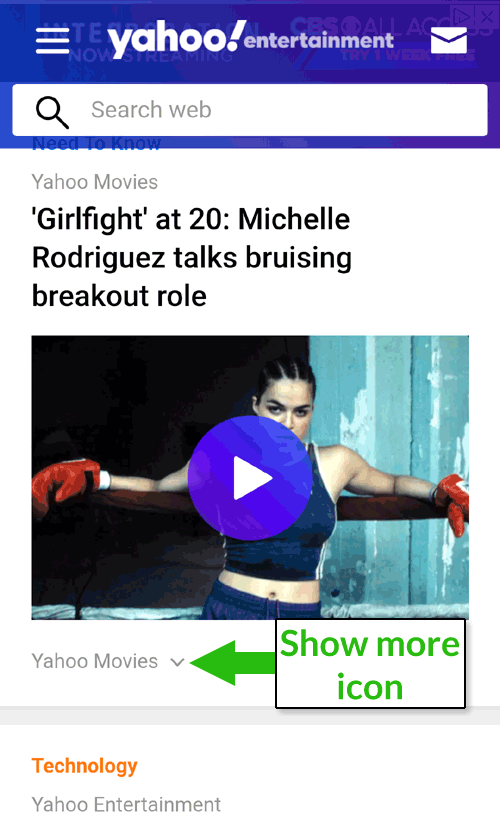Hiding text from users and only showing it to search engines is an old spam technique.
Today there are Google-approved ways to hide content.
More than ever, there are valid reasons to hide content in a way that follows Google’s guidelines.
The SEO benefit can result in better user engagement, increased popularity, and an increase in crawled pages.
What Is Hidden Text?
Hidden text is generally considered a spam technique from the earliest days of search engines.
Search engines back then relied on simple text matching algorithms.
Thus a site could publish content for a site visitor, and hidden text for search engines.
The hidden text meant for the search engines was designed for ranking purposes – it sometimes consisted of repeated keywords.
And this allowed spammers to create long essays for search engines.
Consumers, on the other hand, received a conversion-optimized web page that wouldn’t ordinarily rank in search engines.
The point is to show users content that encourages them to click an affiliate link and buy something.
The other goal of the tactic was to show search engines content designed to help the web page rank better.
Now there is an ethical way to hide text and image content.
And it’s important to understand how to do this for mobile web layouts.
Outdated & Spammy Way Text Was Hidden
There were many ways to hide text.
A common way was to use a white font color on a white background and then put that font at the bottom end of a web page.
Some spammers also created web pages that positioned content to the far right, off-screen.
This made the content not visible to site visitors who would need to scroll to the right to see it.
Another technique was to position an image over the hidden text.
One of the most sophisticated schemes for hidden text was the use of a technique called cloaking.
Cloaking involves identifying search engines and showing them different content.
The word cloaking that’s used to describe this content hiding technique may have come from science fiction, where a cloaking device was a machine that hid a person or a space ship.
Similarly, content cloaking enabled the search engine spammer to show a page of content to a search engine and hide it from site visitors.
Cloaking was generally achieved using JavaScript and user agent sniffing.
Basically, a script determined if a site visitor was a search engine or not.
If the script identified the visitor as a search engine, it would serve a different page to it.
That page would generally be keyword optimized for ranking but not for users.
Virtually no location in the HTML code was overlooked as a location for hiding text.
Hidden text could be found in image alt attributes, and even at infinitesimal font sizes at the bottom of a web page.
Text can even be hidden within comment tags which search engines are known to overlook and not index.
As ridiculous as some of those techniques may sound, all it takes is one or two affiliate site SEOs to report that it works and half the industry follows suit.
And as the lead character in the hit television show The Mandalorian says, “This is the way.”
Why Hidden Text Used to Be Spammy
The main reason some may still use hidden text is that it’s a way to improve the click-through rate from the spam page to another page where the consumer can make a purchase.
This is a variation of a bait and switch.
Instead of substituting one product for another product (like in the classic bait and switch), this technique offers a product for sale then sends the consumer somewhere else to buy it.
So, a way to improve affiliate sales (or even ad clicks) is to create a web page offering a specific product.
When a consumer clicks through from a search result, they are confronted with a web page that is highly optimized for conversions that encourages them to find the product on another page.
But in order to rank that conversion-optimized page, they need to show a different page to search engines.
That’s where cloaking comes in.
The cloaked content could have been a real web page at some point in the past, with real links still pointing to the web page to improve its ability to rank.
That way a search engine following the inbound links will find the old content and rank it.
But a site visitor will find conversion-optimized content.
The purpose was to improve sales or ad clicks for the publisher.
Hidden Text Penalties
Web pages employing hidden text tactics are still in danger of receiving a manual action from Google.
A manual action is when someone at Google reviews a site and judges it to be in violation of Google’s guidelines.
Difference Between Hidden Text & Hidden Tabbed Content
The hidden text penalty can seem confusing.
Many sites, both large and small, feature content that’s hidden behind a tab where it takes a click to be able to see the content.
There is a difference between hidden text and content that is hidden behind a tab.
The difference is that the web page offers a visible signal to the user that there is more content and how to get it.
The signal is usually a phrase like, “Read more.”
In the above scenario, the content is not visible but it’s also not hidden, either.
It’s not hidden because the site visitor can access and see the content.
Content is problematic when a site visitor cannot see it because it’s inaccessible.
Content that needs an extra click to view is fine.
That’s because the content isn’t hidden from users. It is still accessible to read.
What is paramount is that what the user sees and what Google sees is an identical match.
It’s the match between what users and search engines see and the availability of the content that makes hidden tabbed content a legitimate use case.
How to Hide Content & Not Violate Google’s Guidelines
Google downloads JavaScript and CSS files in order to render the web page the same way a user would see it.
It is important that what the users see (on a mobile device) matches what the search engine sees.
Subscribe for Daily Search Insights
AI, PPC, and digital marketing news distilled to fuel success. Join the other 75k marketers!
Google renders the web page to approximate what a user might see.
If content is hidden behind a “read more” link to make the content visible on the page, then that’s okay.
If a user can see it then Google can see it too.
Google views web pages as a user does.
Google has confirmed this way of handling tabbed content over the years.
And Google continues to affirm that nothing has changed with how it treats hidden tabbed content.
Actually, Google has been fine with content that is hidden behind tabs that need clicking since at least 2013.
Google Webmaster Trends Analyst Gary Illyes also confirmed that tabbed content is fine.
In 2016, he confirmed that Google indexes content hidden behind an accordion tab.
He also affirmed that Google does not devalue this content in any way.
no, in the mobile-first world content hidden for ux should have full weight
— Gary 鯨理/경리 Illyes (@methode) November 5, 2016
And in early 2020 Google’s John Mueller affirmed that hidden tabbed content is fine.
He said, without any ambiguity, that Google indexes content hidden behind a tab.
He said that it indexed like any other content.
This is what John Mueller said:
“Specifically when it comes to content on mobile pages we do take into account anything that’s in the HTML.
So if there’s something there that might be visible to users at some point we will include that… so that’s completely normal.”
Why It’s Important to Use Hidden Content for SEO
It can actually be imperative to use hidden text and image content because today’s website visitor is likely to use a mobile device to read content.
It’s challenging to present content on a small screen while also making the web content easy to access, and the rest of the site only a few clicks away.
Every opportunity to squeeze more information into a tiny screen size must be taken.
Hiding content within easily clicked icons makes the web page less cluttered, making it a better user experience.
Creating a site that presents a quality user experience is increasingly important for SEO because Google tends to show sites that are popular with users and that users expect to see.
By making the site less cluttered but easier to use contributes to making the site more popular.
Here is a screenshot of a Yahoo News page. Yahoo makes it easy to navigate to more content by hiding it.
A click of the triangular “show more” icon provides access to more content.
The benefit to users is obvious.
The benefit for SEO is that a publisher can add links to more content that not only users can find but search engines can find, as well.
Because Google is transitioning to a mobile-first index, it’s important to employ strategies like hiding links to content in a Google-approved manner.
This is to get as much content as possible indexed while presenting a flawless user experience to site visitors.
A perhaps more direct SEO benefit is that hiding content makes it easier to squeeze more text and images onto a mobile sized screen.
Hidden content, when done correctly, can maximize the amount of content on a small mobile web page and help increase the amount of content that is indexed by search engines.
That’s a win-win for users and SEO.
More Resources:
- 3 Ways to Find Hidden Spam Links & Text on a Webpage
- 7 Terrible, No-Good SEO Tactics to Abandon Forever
- The Complete Guide to On-Page SEO
Image Credits
All screenshots taken by author, September 2020




